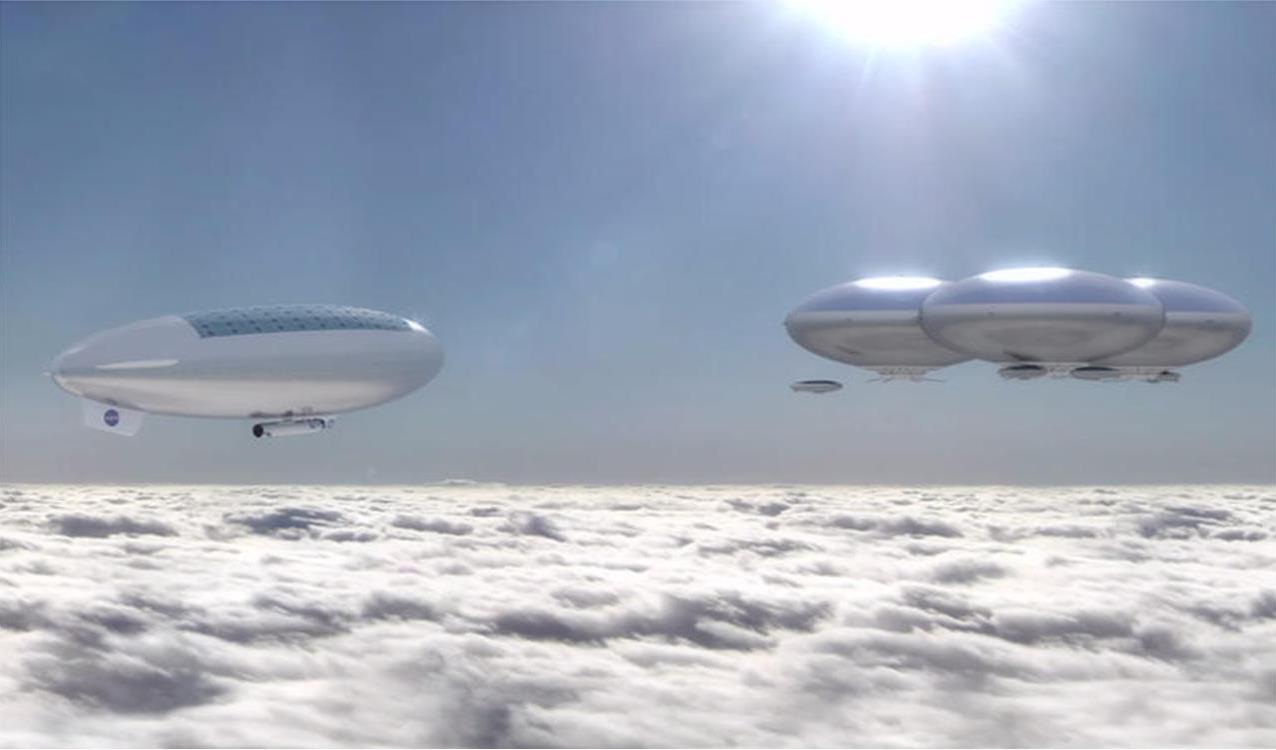NASA Proposes Setting up a ‘Floating City’ in the Atmosphere of Planet Venus
In most of the space exploration news on man’s attempts to colonize the solar system, you mostly hear of proposed manned mission to the red planet Mars. Mars is often chosen as the ideal planet because scientists have various evidence that suggest the red planet once had water; and where there is water, life as we know it can be supported.
But a mission to Mars is a much daunting task compared to mission to Venus. However, much to the contrary Venus shows all the evidence of not being able to support life as we know it. It has a sulfurous corrosive landscape, a global greenhouse effect that has made its surface temperatures reach 900 degree Fahrenheit (482 degree Celsius) and an atmospheric pressure equal to one mile (1.6Km) below sea level on Earth.
It is also true that a manned mission to Venus is comparatively cheaper and faster to a manned mission to Mars. NASA scientists estimated that a mission to Venus and back would take about 440 days while a round-trip to Mars takes somewhere between 650 and 900 days.
Must Read: Mars once had civilized beings, but were wiped out by nuke explosion.
NASA is proposing a future mission of sending men to Venus, in a mission involving zeppelins and floating cities. The goal being to avoid the inhabitable surface of Venus and instead float around in its atmosphere at an altitude of 30 miles (48.28 Kms) above the surface. It is believed that the atmospheric pressure and gravitational pull at this altitude are similar to that of Earth’s.
NASA researchers Dale Arney and Chris Jones have proposed this mission, dubbing it a High Altitude Venus Operational Concept (HAVOC) mission. The mission would initially send a 100-foot-long autonomous unmanned airship to conduct the first observations and will be followed by a second manned mission. The second mission will have two astronauts living and working inside a cabin slung below a larger helium and solar-powered airship. Given that Venus is closer to the Sun than Earth, scientists expect the airship to be better able to harness solar power than it could on Earth.
If the second mission proves to be successful, other missions could follow leading to the establishing of a permanently floating city acting as a science outpost on Venus. Venus is considered as an ideal exploration planet compared to Mars, given its atmosphere is capable of protecting astronauts from the harmful radiation.
“Traditionally, say if you’re going to Mars, you talk about ‘entry, descent and landing’ (EDL). Obviously, in our case, ‘landing’ would represent a significant failure of the mission, so instead we have ‘entry, descent and inflation’ (EDI).” – NASA researcher Dale Arney.
Once the crew successfully setups the airship and is floating 30 miles above Venus’ surface, the airship will take advantage of wind currents and would be able to circumnavigate the place once every 110 hours. The crew will be in a better position to conduct various scientific research and operations.



